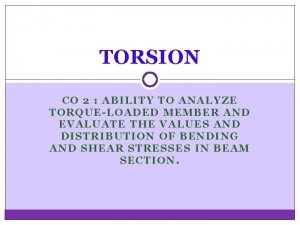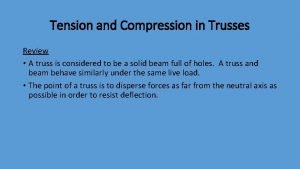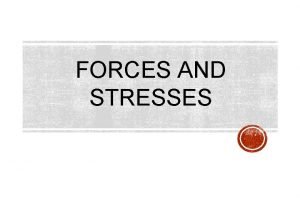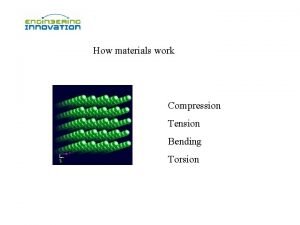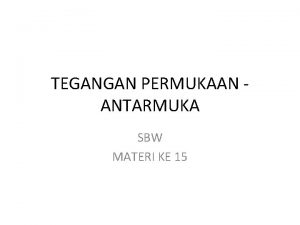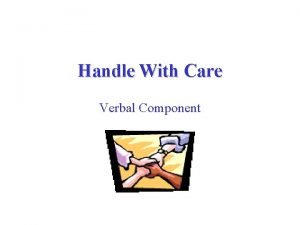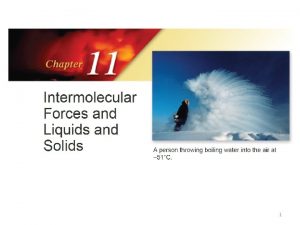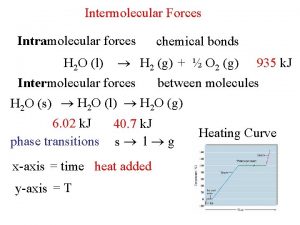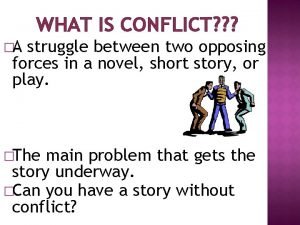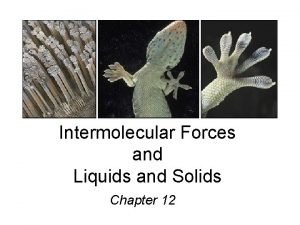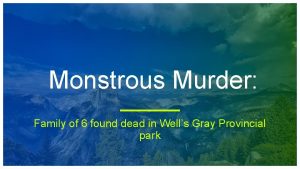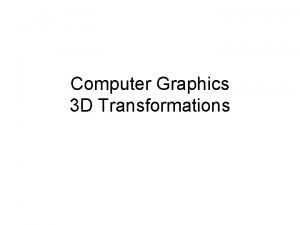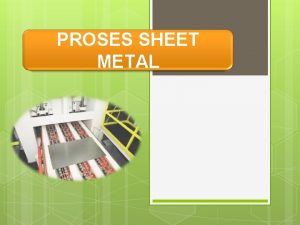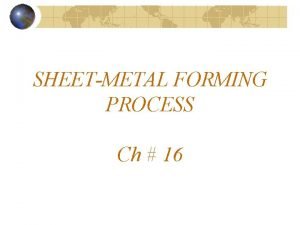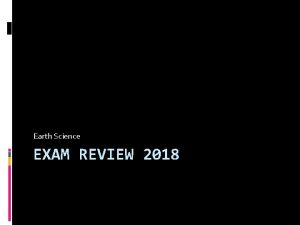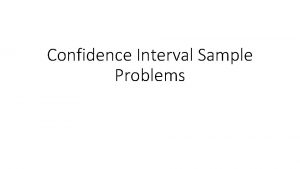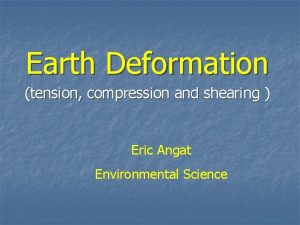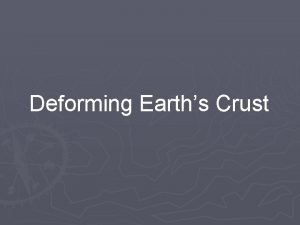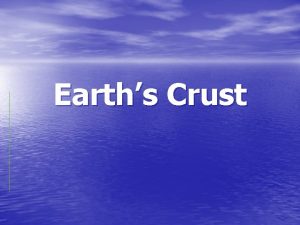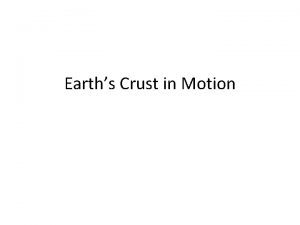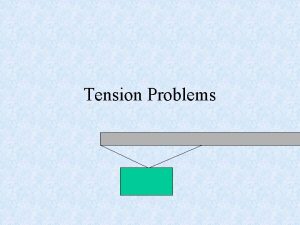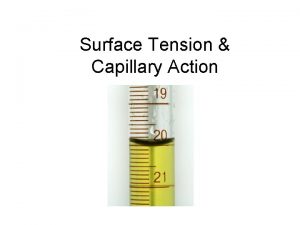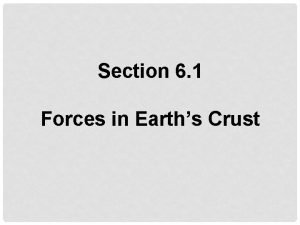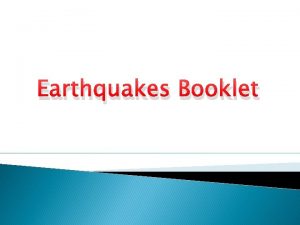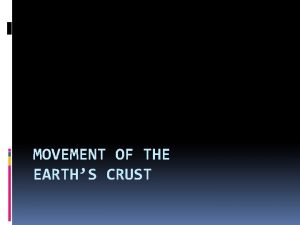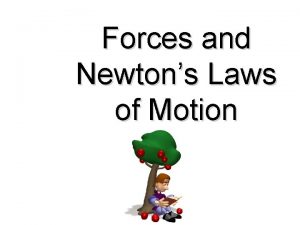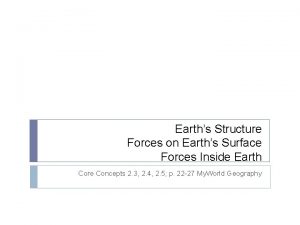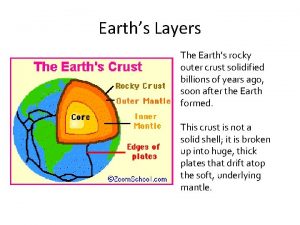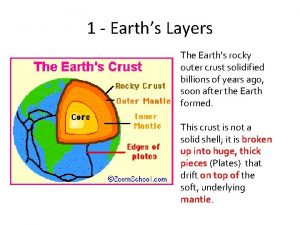FORCES IN EARTHS CRUST STRESS Tension Compression Shearing


























- Slides: 26

FORCES IN EARTH’S CRUST

STRESS Tension Compression Shearing These forces work over millions of years to change the shape and volume of rock.

TENSION Stretches, or pulls the rock apart. Similar to pulling apart a piece of chewing gum.

COMPRESSION Squeezes rock until it folds or breaks. Similar to a trash compactor.

SHEARING Pushes rock in two opposite directions.

FAULTS When enough stress builds up in a rock, the rock breaks, creating a fault. Fault- a break in the rock of the crust where rock surfaces slip past each other. Most faults occur along plate boundaries, where the forces of plate motion push or pull the crust so much that the crust breaks.

FOOT VS. HANG FOOTWALL Block of rock that forms the lower half of a fault. HANGING WALL Block of rock that forms the upper half of a fault.

NORMAL FAULTS (CLICK) Caused by TENSION. The hanging wall slides downward as a result of the rock being pulled apart.

NORMAL FAULTS Occur where plates diverge, or pull apart (TENSIONS). Rio Grande rift valley in New Mexico.

NORMAL FAULT QUESTION How does a normal fault occur? What type of force causes a normal fault? What happens to the footwall and hanging wall?

REVERSE FAULTS (CLICK) Caused by COMPRESSION. A fault where the hanging wall slides upward as a result of compression.

REVERSE FAULTS Northern Rocky Mountains

REVERSE FAULT QUESTION How does a reverse fault occur? What type of force causes a reverse fault? What happens to the footwall and hanging wall?

STRIKE-SLIP FAULTS (CLICK) Caused by SHEARING. A fault in which rocks on either side move past each other sideways with little up or down motion.

STRIKESLIP FAULT Transform Boundary- San Andreas fault

STRIKE-SLIP FAULT QUESTION San Andreas fault Describe how a strikeslip fault occurs. What force cause it?

EXAMPLE #1 WHAT TYPE OF FAULT? WHAT TYPE OF STRESS?

EXAMPLE #2 WHAT TYPE OF FAULT? WHAT TYPE OF STRESS?

EXAMPLE #3 WHAT TYPE OF FAULT? WHAT TYPE OF STRESS?

EXAMPLE #4 WHAT TYPE OF FAULT? WHAT TYPE OF STRESS?

EXAMPLE #5 WHAT TYPE OF FAULT? WHAT TYPE OF STRESS? A B C

EXAMPLE #6 A WHAT TYPE OF FAULT? WHAT TYPE OF STRESS? B C

FOLDING EARTH’S CRUST Anticline- a fold in rock that bends upward into an arch.

FOLDING EARTH’S CRUST Syncline- a fold in rock that bends downward to form a valley.

DESCRIBE THE DIFFERENCE BETWEEN AN ANTICLINE AND SYNCLINE.

WHICH LETTER IS AN ANTICLINE? WHICH LETTER IS A SYNCLINE? A B
 Plasticity in earth's layers
Plasticity in earth's layers Earths layer foldable
Earths layer foldable Earths crust
Earths crust What are the families of the periodic table
What are the families of the periodic table Internal torque equation
Internal torque equation Stability and determinacy of structures
Stability and determinacy of structures Truss compression and tension
Truss compression and tension Tension, compression, shear torsion worksheet
Tension, compression, shear torsion worksheet Torsion compression tension and shear
Torsion compression tension and shear Relevo dobrado
Relevo dobrado Pengertian dari tegangan antar muka adalah
Pengertian dari tegangan antar muka adalah Spin coat
Spin coat Verbal component
Verbal component Tension stress science
Tension stress science Dipole induced dipole forces examples
Dipole induced dipole forces examples Surface tension intermolecular forces
Surface tension intermolecular forces A clash between two opposing groups
A clash between two opposing groups Liquid properties
Liquid properties Wells gray provincial park murders
Wells gray provincial park murders Shear transformation in computer graphics
Shear transformation in computer graphics Metal forming part factories
Metal forming part factories Shearing transformation in computer graphics
Shearing transformation in computer graphics Slitting and shearing
Slitting and shearing Proses forming
Proses forming Slitting and shearing
Slitting and shearing Shearing fault
Shearing fault A random sample of 12 shearing pins is taken
A random sample of 12 shearing pins is taken




